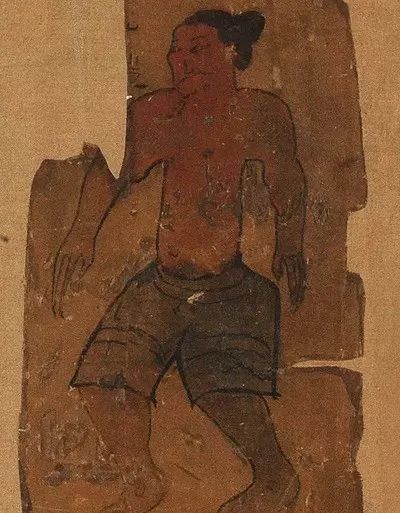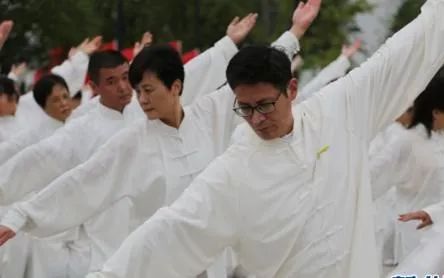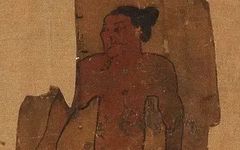
Dao Yin refers to various postures and physical movements. These exercises are often combined with self-massage and are closely related to medical practices for treating diseases. The Dao Yin Tu (Guiding Exercise Diagram) unearthed from the Mawangdui tombs during the Western Han dynasty proves that Dao Yin was quite popular during the Qin and Han dynasties, reflecting the efforts of people over two thousand years ago to strengthen their bodies and combat illness. It depicts 44 individuals of different ages and genders engaging in Dao Yin exercises, with 13 illustrations related to medical conditions, indicating that Dao Yin is effective not only for knee pain in the limbs but also for abdominal issues in the digestive system, ear and eye problems in the sensory system, and even certain infectious diseases.

There are also various health-preserving techniques such as Long Deng (Dragon Ascending), Yao Bei (Hawk’s Back), Xiong Jing (Bear’s Essence), Yuan Hu (Monkey’s Call), He Xiang (Crane’s Flight), and Tang Lang (Praying Mantis), which are similar to what is described in the Zhuangzi. In Daoism, Dao Yin can strengthen the body and prevent diseases. The Taiqing Dao Yin Yang Sheng Jing states: “The purpose of Dao Yin is to expel all evil energies from the joints and bones, allowing the righteous qi to remain. Those who diligently practice the movements and words day and night will strengthen their joints and cure a hundred diseases. If one suddenly suffers from a stroke, has a chronic condition with paralysis, deafness, scalp diseases, cough, or back pain, they can refer to the diagrams and follow the guidance to expel the illness through Dao Yin. The practice of Qi Gong can nourish the internal organs, while Dao Yin can treat the limbs. By following the natural way and diligently practicing, one can maintain health in harmony with the universe. Regarding the health benefits of Dao Yin, there are four main points. Ge Hong said: “First, it regulates the Ying and Wei (defensive qi), second, it eliminates excess food and water, third, it expels wind evil, and fourth, it promotes blood and qi. Therefore, Laozi said: ‘Between heaven and earth, it is like a bellows! Empty yet unyielding, moving yet producing more.’ This means that through Dao Yin, a person’s spirit becomes more vigorous. Dao Yin externally leads to internal healing, similar to how acupuncture targets the source of ailments, allowing various afflictions to be eliminated at their roots.” It is also pointed out that the way of Dao Yin emphasizes harmony, with movements being gentle and measured. The secret teachings of Dao Yin contain over a thousand methods, some of which can prevent diseases that have not yet manifested, while others can treat chronic conditions effectively, not merely empty words.” Sima Chengzhen’s Xiu Zhen Jing Yi Za Lun further elaborates on the medical basis of Dao Yin: “The joints of the body rely on movement; the meridians and collaterals depend on circulation. If one is idle and does not engage in physical activity, Dao Yin is necessary to achieve harmony and smoothness. A door hinge does not rot; this principle is indeed true. The blood, qi, and spirit of a person are what nourish life and sustain existence; the meridians are what circulate blood and qi; thus, the Ying qi is what promotes the flow of fluids and blood, benefits the muscles and bones, and regulates the joints. The Wei qi is what warms the skin, nourishes the flesh, and regulates the openings. The floating qi that repairs the meridians is the Wei qi, while the essence and qi that flow through the meridians is the Ying qi. Yin and Yang follow each other, and the internal and external are interconnected, like a ring with no end. The head is the residence of wisdom, the back is the residence of the chest, the waist is the residence of the kidneys, the knees are the residence of the tendons, and the marrow is the residence of the bones. Furthermore, all bones belong to the eyes, all marrow belongs to the brain, all tendons belong to the joints, all blood belongs to the heart, and all qi belongs to the lungs; this is the daily cycle of the limbs and the eight channels. Thus, it is known that the five labors cause damage, and prolonged movement or stillness leads to the guiding of the five animals, shaking the joints, as the human body is interconnected, and the flow of qi rises and falls in order.”

In terms of characteristics, effects, and purposes, Dao Yin is mainly divided into two categories: strengthening the body and treating diseases. The strengthening exercises are often combinations of routines, among which the most famous are the Wu Qin Xi (Five Animal Frolics) and Ba Duan Jin (Eight Pieces of Brocade). The Wu Qin Xi is attributed to Hua Tuo and has been highly regarded since its inception, evolving into various practices that continue to serve people’s health today. Specific methods can be found in the illustrations on page 131 (according to the records in the Wan Shou Xian Shu). The Ba Duan Jin appeared during the Northern Song dynasty and was transmitted by Zhongli Quan. Its practice is performed in a seated position and is divided into eight sections: The first section involves knocking the teeth and gathering the spirit thirty-six times, with both hands embracing Kunlun and striking the heavenly drum twenty-four times. The second section involves swaying the heavenly pillar left and right, each twenty-four times. The third section involves stirring the upper palate with the tongue left and right thirty-six times, rinsing thirty-six times, and dividing into three mouths, as if swallowing hard objects, before proceeding to ignite the fire. The fourth section involves rubbing the Shen Tang (Kidney Hall) thirty-six times, with more repetitions being better. The fifth section involves single joint rotations left and right, each thirty-six times. The sixth section involves double joint rotations, thirty-six times. The seventh section involves rubbing the hands together, exhaling five times, and then crossing the hands to support the heavens and pressing the top of the head, each three or nine times. The eighth section involves using both hands like hooks, reaching forward to grasp the soles of the feet twelve times, and then sitting back down. Subsequently, the Ba Duan Jin methods in the Ming dynasty by Leng Qian in Xiu Ling Yao Zhi, Zhu Quan in Huo Ren Xin Fa, and Hu Wenhuan in Liu Xiu Yao Jue basically continued to use this set of practices.In the Ming dynasty, Zhou Lujing transmitted the Chi Feng Sui (Red Phoenix Essence) with forty-six movements, combining movement and stillness, illustrated with text, showing the secrets of cultivation and explaining its medical effects for practical use. For example, the Peng Ruo Guan Jing Fa treats lower back and leg pain. The Zhuang Zhou Butterfly Dream Method treats nocturnal emissions. The Zhongli Quan Mo Shen Tang Method treats kidney deficiency and coldness, as well as lower back and leg pain. The Wei Boyang Dao Method treats shoulder pain. The Song Xuanbai Snow Lying Method treats indigestion. The Fu Ju Xiansheng Mo Jing Fa treats widespread pain. The Liu Hai Xi Chan Fa treats widespread stiffness and pain, as well as seasonal colds. The Bai Yu Chan Yun Qi Fa treats chest and abdominal fullness. The Jin Ke Ji Fen Xiang Jing Zuo Fa treats unbearable intestinal pain. The various Dao Yin methods recorded in the Ming dynasty by Luo Hongxian in the Wan Shou Xian Shu total 49 types of techniques, all of which are accompanied by herbal prescriptions to assist in treatment.–Excerpt from Li Yuanguo’s Chinese Daoism Reader
Legal Affairs Conference
-
Announcement of the Ritual for the Bestowal of Talismans to Faithful Practitioners (Heavenly Medicine, Wenchang) at the Tianshi Mansion of Longhu Mountain
-
Guidelines for Taking Refuge at the Tianshi Mansion of Longhu Mountain

